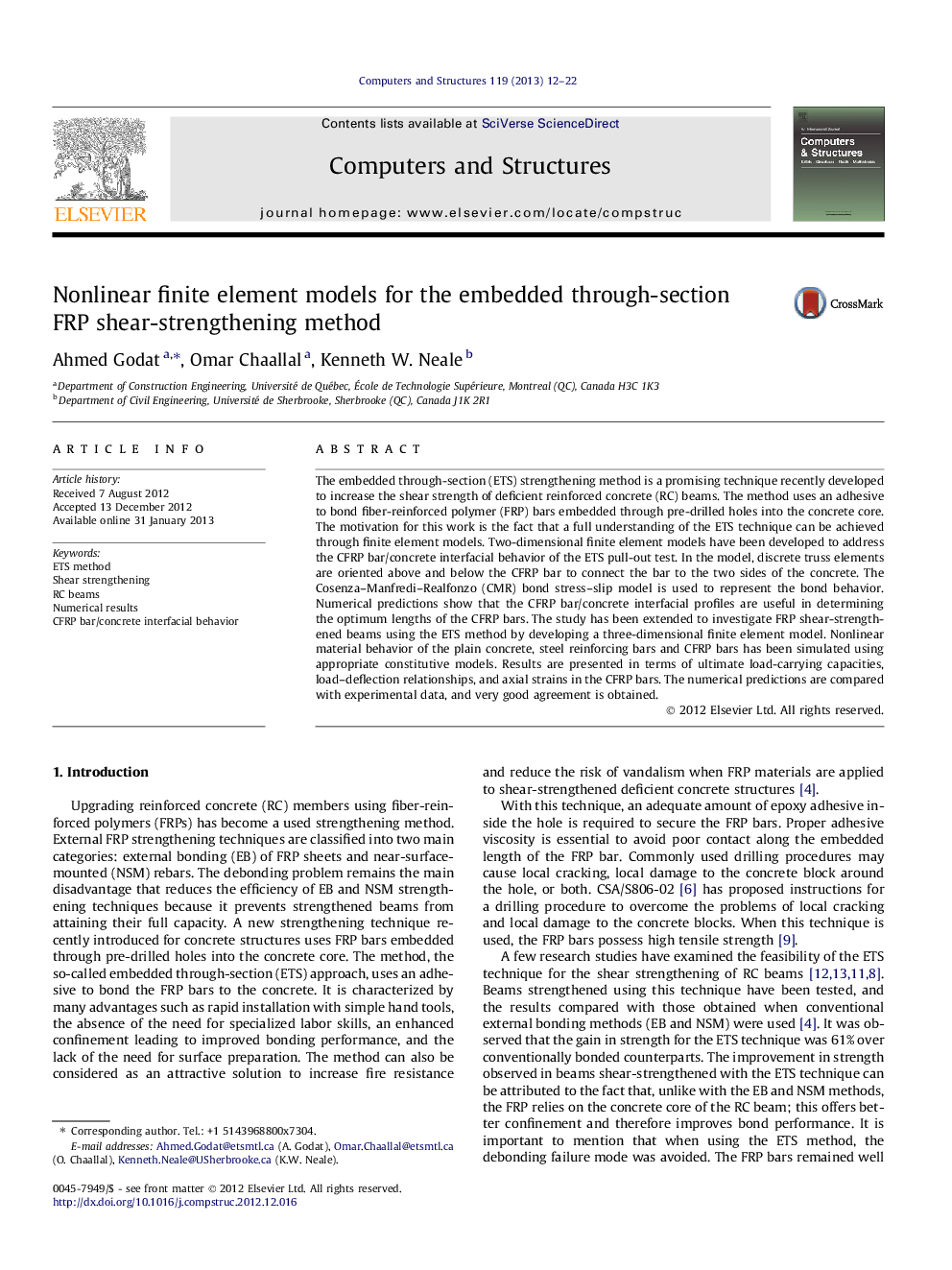| کد مقاله | کد نشریه | سال انتشار | مقاله انگلیسی | نسخه تمام متن |
|---|---|---|---|---|
| 510620 | 865778 | 2013 | 11 صفحه PDF | دانلود رایگان |

The embedded through-section (ETS) strengthening method is a promising technique recently developed to increase the shear strength of deficient reinforced concrete (RC) beams. The method uses an adhesive to bond fiber-reinforced polymer (FRP) bars embedded through pre-drilled holes into the concrete core. The motivation for this work is the fact that a full understanding of the ETS technique can be achieved through finite element models. Two-dimensional finite element models have been developed to address the CFRP bar/concrete interfacial behavior of the ETS pull-out test. In the model, discrete truss elements are oriented above and below the CFRP bar to connect the bar to the two sides of the concrete. The Cosenza–Manfredi–Realfonzo (CMR) bond stress–slip model is used to represent the bond behavior. Numerical predictions show that the CFRP bar/concrete interfacial profiles are useful in determining the optimum lengths of the CFRP bars. The study has been extended to investigate FRP shear-strengthened beams using the ETS method by developing a three-dimensional finite element model. Nonlinear material behavior of the plain concrete, steel reinforcing bars and CFRP bars has been simulated using appropriate constitutive models. Results are presented in terms of ultimate load-carrying capacities, load–deflection relationships, and axial strains in the CFRP bars. The numerical predictions are compared with experimental data, and very good agreement is obtained.
► 2D FE models are developed for the CFRP bar/concrete interfacial behavior.
► The CMR bond stress–slip model is used to represent the bond behavior.
► The numerical CFRP bar/concrete interfacial profiles are used to determine the CFRP bars optimum lengths.
► 3D FE models are developed to simulate ETS FRP shear-strengthened beams.
► The numerical predictions show good agreement with experimental data.
Journal: Computers & Structures - Volume 119, 1 April 2013, Pages 12–22